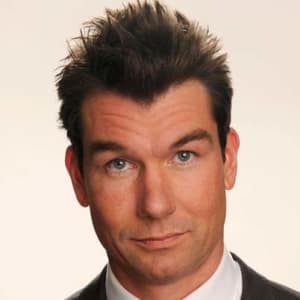
Peter Staley
As part of the organizations ACT UP and the Treatment Action Group in the 1980s and ’90s, activist Peter Staley helped bring attention to the need for effective, accessible treatments for HIV and AIDS patients.
Who Is Peter Staley?
Peter Staley (born January 9, 1961) was diagnosed with AIDS-related complex in 1985, when HIV and AIDS were only beginning to be understood. At the time the U.S. government was doing relatively little to combat this deadly disease, which Staley felt was due to the illness being associated with gay men like him. In 1987 Staley joined ACT UP, the AIDS Coalition To Unleash Power, to push for more funding for AIDS research and faster FDA drug approval; the next year he left his job as a bond trader to become a full-time activist. Staley participated in many demonstrations, including shutting down the New York Stock Exchange in 1989 and placing a condom on the Virginia home of homophobic Senator Jesse Helms in 1991. Staley also helped found the Treatment Action Group in 1992; served on the board of directors for amfAR, The Foundation for AIDS Research, from 1991 to 2004; and was appointed by President Bill Clinton to the National Task Force on AIDS Drug Development in 1994. The work of Staley and other activists resulted in the increased development of and access to effective medications, meaning HIV infection was no longer a death sentence.
AIDS Activist
Staley was a member of ACT UP and a founder of the Treatment Action Group. In addition to participating in numerous demonstrations — and getting arrested 10 times — he appeared on shows like Crossfire, where he debated Pat Buchanan, Nightline and 60 Minutes. The pressure brought to bear by activists like Staley resulted in more money being allocated to AIDS research and provided easier access to drugs.
ACT UP
On the morning of March 24, 1987, Staley was going to work as a bond trader when he was handed a flyer about a demonstration by ACT UP. At work, he heard another trader say those demonstrating deserved to die "because they took it up the butt" (Staley had felt the need to hide his sexual identity at his job, so he could not share that he was a gay man who'd received a diagnosis of AIDS-related complex). That night Staley saw on the news that the FDA was adjusting its regulations because of the demonstration; impressed, he attended the next ACT UP meeting. He soon became head of fundraising, but initially limited his participation in demonstrations so he wouldn't be identified and risk his employment.
In 1988, feeling the stress of work was hurting his health, Staley left his job to become a full-time activist. He participated in a 1988 protest that shut down an FDA location. In 1989 he was among those who took over an office at the pharmaceutical company Burroughs Wellcome to protest the high price of AZT, one of the earliest treatments for HIV and AIDS. (At the time, the medication was the most expensive ever, even though the research behind it had been largely government-funded.) Staley also spearheaded a 1989 action that saw ACT UP members sneak into and shut down the New York Stock Exchange to protest AZT's high price; a few days afterward the price was lowered.
ACT UP also provided Staley with a supportive community. He met boyfriends through the group and considered its members family.
Treatment Action Group
Senator Jesse Helms of North Carolina made helping AIDS patients more difficult, as he used his position to rail against gay men as "perverts" and critique the use of federal funds for AIDS research. As part of an ACT UP affinity group called the Treatment Action Guerrillas (with membership drawn from the Treatment and Data Committee), Staley and a few others went to Helms' Virginia home and covered it with an enormous nylon condom with the message: "A condom to stop unsafe politics — Helms is deadlier than a virus."
The group's focus on treatment meant they were willing to work with anyone, including government agencies, members of Congress and pharmaceutical companies. Yet some in ACT UP considered those entities to be their enemies. Clashes followed, which were exacerbated by ongoing power struggles in the organization. In 1992, with a name change to Treatment Action Group, TAG separated from ACT UP.
TAG would successfully lobby the government to restructure how its AIDS research was managed, resulting in the creation of the Office of AIDS Research.
Continuing Activism
Staley was appointed to New York State’s Ending the Epidemic Task Force by Governor Andrew Cuomo in 2013. The group produced a plan for reducing HIV infections in the state by 2020.
Staley has also spoken out in favor of pre-exposure prophylaxis, known as PreP, which means taking a daily medication to prevent infection following exposure to HIV. However, critics feel it can encourage risky behavior and disapprove of the long-term use of medication when other options, such as condom use, exist to prevent transmission.
'How to Survive a Plague'
Staley's activist work in the 1980s and '90s made him a lead subject in the Oscar-nominated documentary How to Survive a Plague (2012), directed by David France. The documentary incorporates interviews as well as older footage from demonstrations, television appearances and other sources.
When Was Peter Staley Born?
Peter Staley was born on January 9, 1961, in Sacramento, California.
HIV Diagnosis
Watching An Early Frost, a television movie about a young man with AIDS, prompted Staley's boyfriend to comment that Staley had the same persistent cough as the onscreen character. A subsequent visit to his doctor resulted in Staley's 1985 diagnosis of AIDS-related complex. Staley has said he believes he was infected in 1983, but cannot be sure.
Staley came out to his family soon after this diagnosis and was happy when they were supportive. And though he was lucky enough to survive until effective drug cocktails were discovered, this left him with feelings of "survivor guilt."
Despite developing a resistance to early treatment regimens, Staley has been able to keep his HIV in check with newer drugs. In a 2013 interview, he said he had an undetectable viral load.
Crystal Meth Addiction
Staley was addicted to crystal meth in his 40s, but was able to get clean after years of effort. He believes meth is often seen as a party drug, and has spoken out about how harmful it can actually be. He also thinks that meth use among gay men may increase their risk of contracting HIV. In 2004 Staley placed ads in a New York City neighborhood that said, "Huge Sale, Buy Crystal, Get HIV Free!"
Family
Staley was the third of four children. His father's work as plant manager for Procter & Gamble meant the family often moved when Staley was young. When he was eight, the Staleys settled in Berwyn, Pennsylvania, outside Philadelphia, and his father started running the PQ Corporation.
Older brother James E. "Jes" Staley spent his career in the world of finance and became head of Barclays in 2015.
Education and Early Career
Staley excelled at the piano; after graduating from Conestoga High School in 1979 he went to the Oberlin Conservatory of Music. However, he didn't want to make music his career, so he soon switched to Oberlin College to study economics and government. Staley's junior year was spent at the London School of Economics, and he interned for the Democratic Congressional Campaign Committee in summer of 1982.
In 1983 Staley graduated and took a job at JP Morgan. Though he'd been out as a gay man in college and while living in London, he went back into the closet to work in what he's described as a homophobic setting. A female friend pretended to be his girlfriend when necessary.
Staley's original plan was to work in finance before going into politics. When he left his job to go on disability in 1988, he was the first bond trader to come out as HIV+ and as gay.
Other Accomplishments
After taking a break from AIDS activism, Staley founded AIDSmeds.com. The site, which launched in 2000, was a resource for information about medications and treatment options for those with HIV. It became part of POZ.com in 2006.
Staley served as a script consultant for Dallas Buyers Club (2013). His memoir is scheduled to be published in 2019.
In addition to the lives that activists like Staley helped save, he feels they sparked a positive shift in public perceptions of homosexuality. In a 2006 interview given for an oral history of ACT UP, he said, "The modern gay rights movement was launched by ACT UP. It started in Stonewall, it died by the early ’80s and it got re-started by ACT UP."



